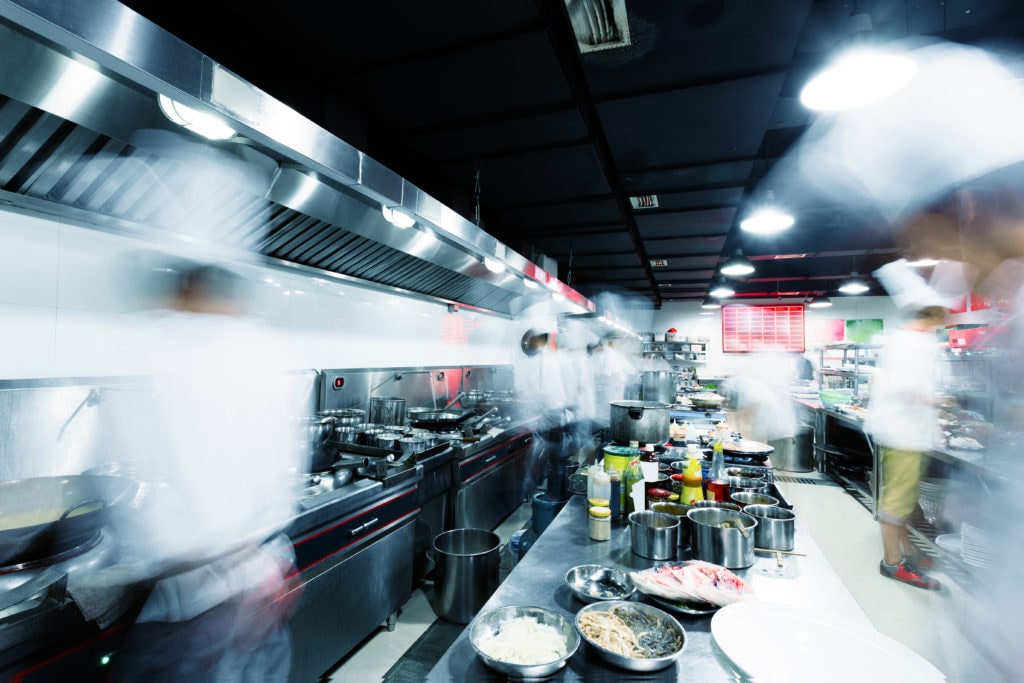
In September, FCSI reported the UK’s casual dining sector was buoyant despite some notable scalps over the course of the year. It’s increasingly looking like the reverse is true across the Atlantic.
Although some of casual dining’s giants are going strong, pumping profits into rejuvenating and rebranding to remain current, the sector as a whole is struggling.
National Restaurant News claims the number of casual dining outlets in the Top 200 restaurant chains that are reporting declining sales has doubled to 62 in 2018 from 31 in 2017. Casual dining sales growth among these big hitting brands is just about positive at 0.4%, a stark contrast with average growth in sales of 3.2% for the Top 200 chains overall.
Even where sales have gone up, commentators claim there’s little room for optimism. “Spending is up,” says Kim McLynn, executive director of public relations at NPD Group. “But the increase is more a reflection of operational costs and not consumers buying more items.”
With many other restaurant chains in the US riding high, why is casual dining struggling? Teasing out the sector’s diversity offers one answer, with casual dining chains rubbing alongside bullish fast casual competitors. These are characterized by smaller menus, lower price points and order-at-the-counter set-ups.
“The exponential growth of fast casual is considered by many to be the key reason that the casual dining segment has been hit so hard,” says Karon Malody FCSI, owner of Culinary Options. On current trends, the former could gobble up the latter altogether in the coming years, she says.
Casual slows down, fast speeds up
Commentators agree about the contrasting fortunes of the casual dining and fast casual segments. Malody identifies seven key reasons contributing to casual dining lagging behind: tightening labor markets, fast casual’s competitiveness, the growth of off-premise eating, failure to keep up with the latest trends like wholesome eating, reduced buying power of the crucial middle class demographic and a slowdown in footfall to the malls where casual dining outlets made their fortune.
This cocktail of woe looks pretty hard to swallow by any standards. As William Bender FCSI, owner of W.H. Bender & Associates, points out, it plays right into the hands of the restaurant industry’s fast casual insurgents.
With lower capital expenditure and square foot space requirements, “owners and operators have selected the fast casual model to be competitive and grow sales and unit locations,” he says. And, adds Bender, lower head count requirements for fast casual operators is insulating them against labor shortages too. “These factors in my opinion do make the fast casual segment very attractive to investors and durable as a growth model,” he says.
On top of this, rapidly changing tastes are a boon for the market’s new entrants. Rising cuisines, from curries to Caribbean, are gaining popularity at an “exponential rate”, according to Malody. Meanwhile, the desire of Generation Z for “locally sourced and sustainable food” is already making its way onto menus, according to Hudson Riehle, senior vice president of research & knowledge at the National Restaurant Association.
So while the sector’s established players are “working hard to refresh their brands, messages and facilities, with some strong new concepts emerging” according to Malody, the flexibility of fast casual undoubtedly lends itself to a world of heightening costs and changing tastes. Casual dining needs more than a rebrand and some new furniture to claw its way back into the market.
Keeping up with the times
Casual dining restaurateurs need to do something dramatic to heave themselves out of the commercial doldrums. Jumping on board the revolution in on-demand technology is a quick win, as Riehle points out.
“Today, only 37% of restaurant traffic happens on-premises,” he says. Delivery, drive-through and carry-out make up the remainder. “Online platforms give restaurants more opportunities for customers to view menus and choose their dining experience.”
Automation is helping to revitalize ailing restaurant kitchens where it’s in full flow. But lurching towards platforms like Deliveroo and Uber Eats as a catch-all solution to their problems could be as dangerous as avoiding them altogether. Balance is required to ensure the reputation for quality, consideration and customer experience that can give casual dining an edge over speedy new challengers isn’t lost in the drive towards convenience.
“There are still guests in all age groups that want to go out and socialize in an inviting restaurant environment,” says Bender. “A restaurant brand that has not been remodeled or updated with technology after seven years is the type of business that will be doomed, in my opinion.”
In these transient times, foodservice consultants need to be at the top of their game to help clients cater to consumers’ diffuse demands. According to Malody, there are three key things to remember to keep abreast of industry trends: “We must sharpen our skills to understand the types of and uses for various technologies. We must be far more strategic in our menu development and engineering techniques. We must align menus with smaller kitchens and fewer pieces of equipment.”
“As an FCSI consultant,” adds Bender, “one of our strong values is the outside perspective we can provide with an owner or management team.” He recommends starting with a situation analysis and brand audit to help clients understand where they are currently and demonstrating logical steps towards improvement.
Whether the proliferation of online restaurant orders will embolden casual dining restaurateurs to play up to their reputation for quality, or strengthen the hand of their more agile rivals, remains to be seen. But, with the sector in choppy waters, foodservice consultants could have a decisive role in establishing casual dining’s niche and showing the way forward in the years ahead against the backdrop of an ever-changing market.
Thomas Lawrence




